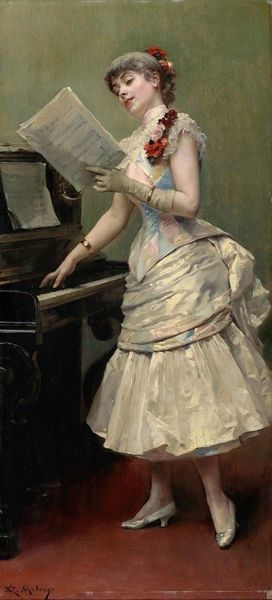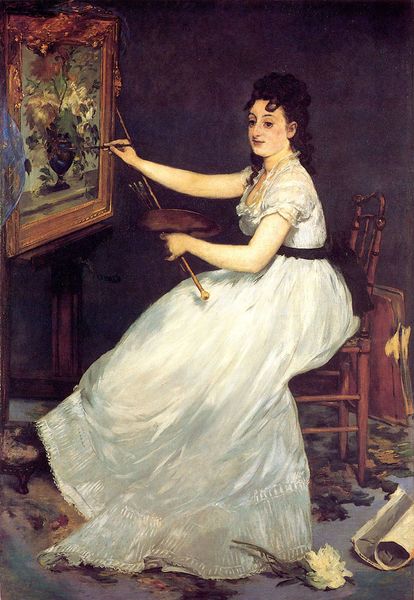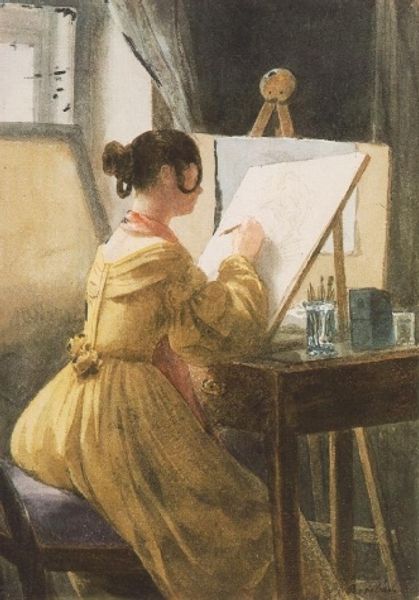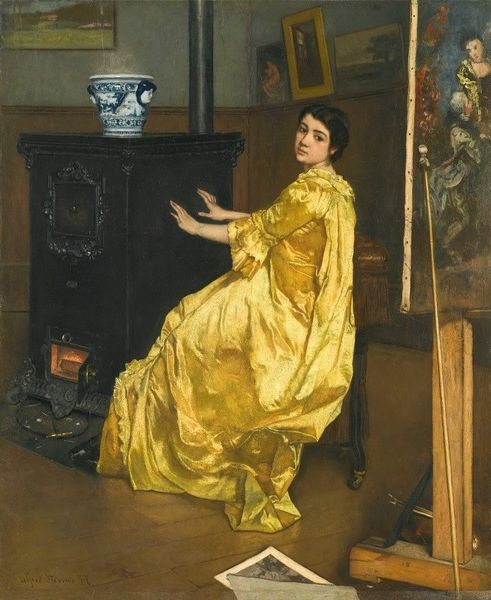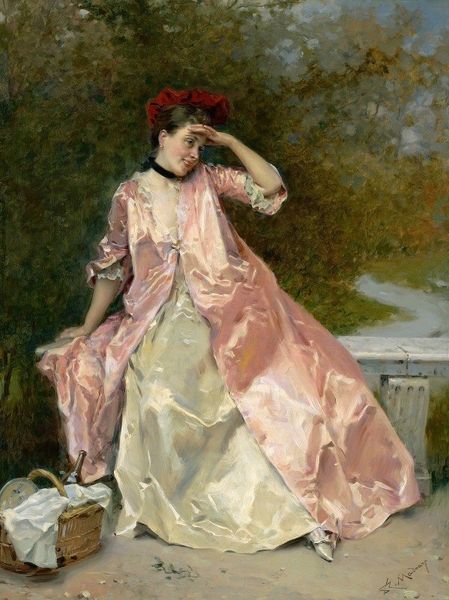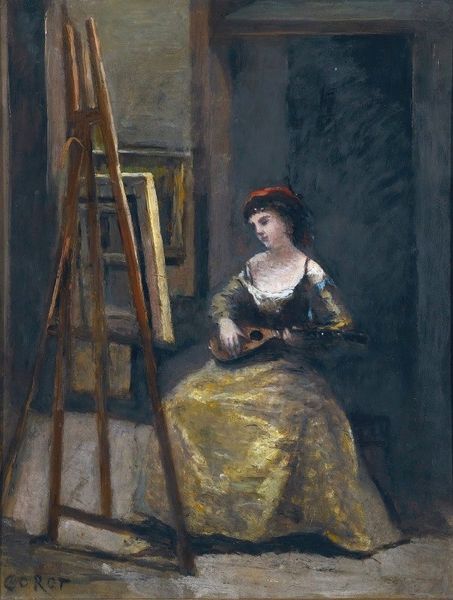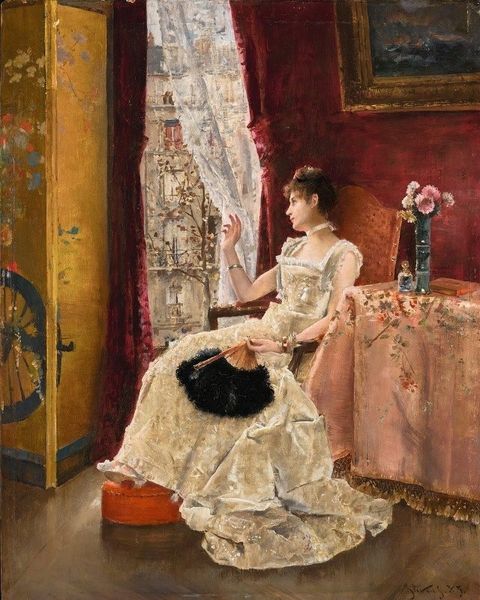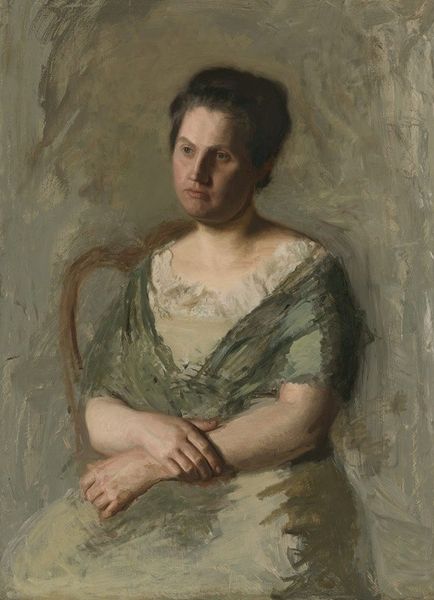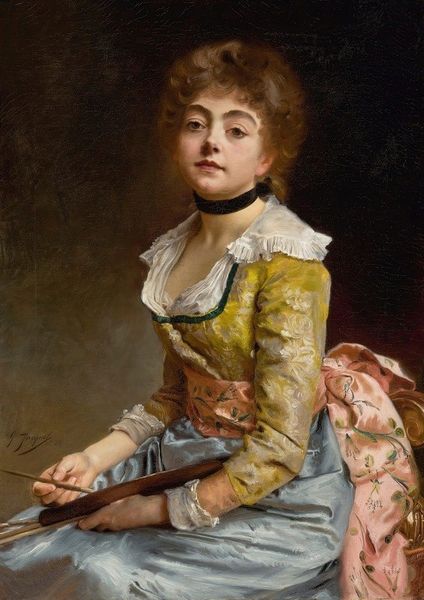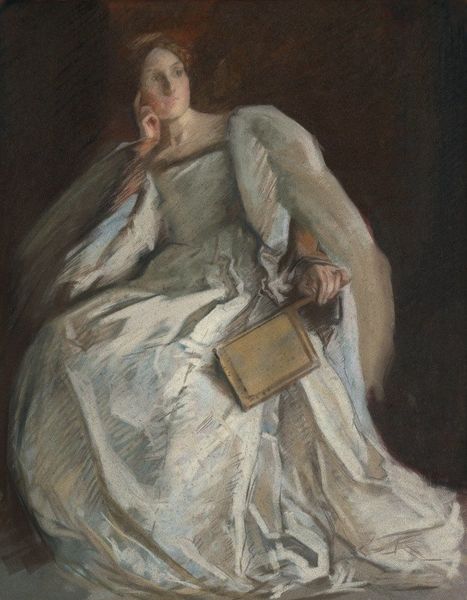
Copyright: Public Domain: Artvee
Curator: Raimundo de Madrazo painted "Model Making Mischief" around 1885. It's a genre scene rendered in oil paint, offering a glimpse into the leisure activities of the late 19th century. What strikes you about it? Editor: Initially, the vibrant pink dress captures my attention—a stark contrast against the dark background, guiding my eye to the figure's pose and then the playful painting within the painting. It feels whimsical, almost theatrical. Curator: Indeed, that dress speaks volumes! Fashion became increasingly significant for demonstrating social standing, and such displays reflected cultural shifts in female empowerment. Editor: Focusing on Madrazo's technique, observe the impasto in the dress. The texture creates visual interest and depth, animating the scene beyond just representation. Curator: I'd add that it reveals an interesting dimension of studio practices in the late 19th century, as art education for women and access to these traditionally male spaces gradually evolved, impacting subject and style. The scene implies privilege, depicting an artist from a social class able to engage freely with the art world. Editor: True. However, if we delve further into formal aspects, consider the canvas within the canvas. It echoes and yet subverts conventions of academic portraiture through its unfinished state and lighthearted, cartoonish aesthetic. Curator: Subversion also comes into play in terms of the art market at that time. Such intimist scenes challenged the academic focus on grand historical painting, suggesting a shift in artistic tastes towards private life and anecdotal content among art collectors. Editor: It’s all within the brushwork, really! Each stroke animates the subject matter; you could interpret that confident hand and open expression as the embodiment of a newfound personal expression for women artists breaking through these historical and societal restraints. Curator: I concur, and I think what stands out is how successfully the scene provides us a slice of art history that’s open for discussion, as female artists navigated increasingly open avenues of art profession. Editor: The beauty in this composition emerges both in color harmony and art historical resonance, something viewers keep coming back to look closer at.
Comments
No comments
Be the first to comment and join the conversation on the ultimate creative platform.
